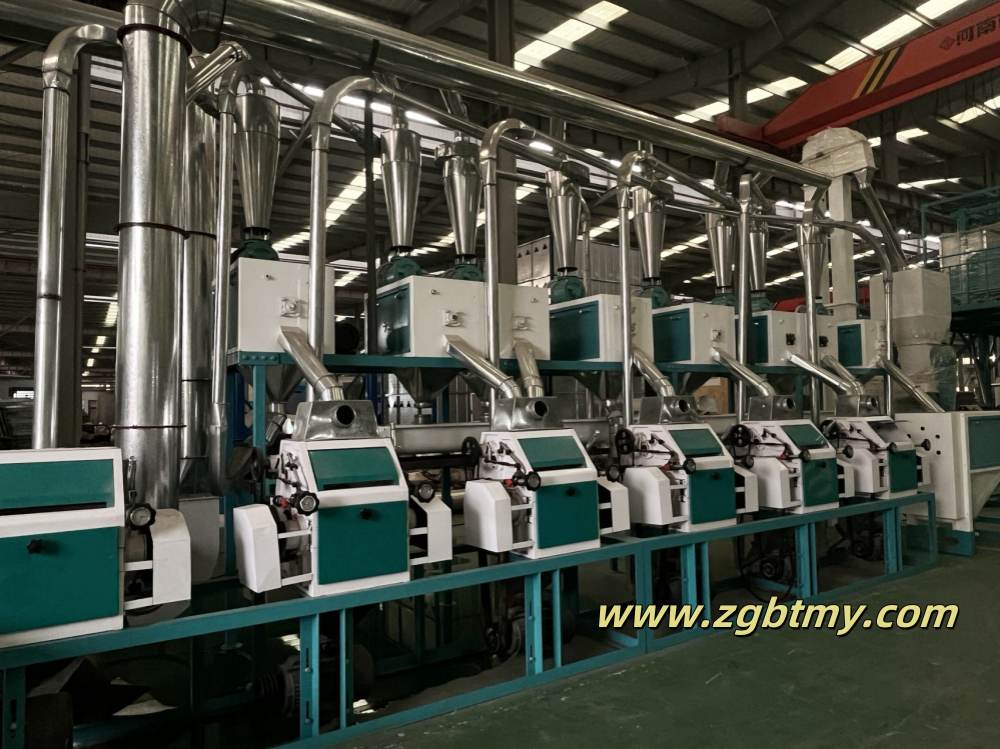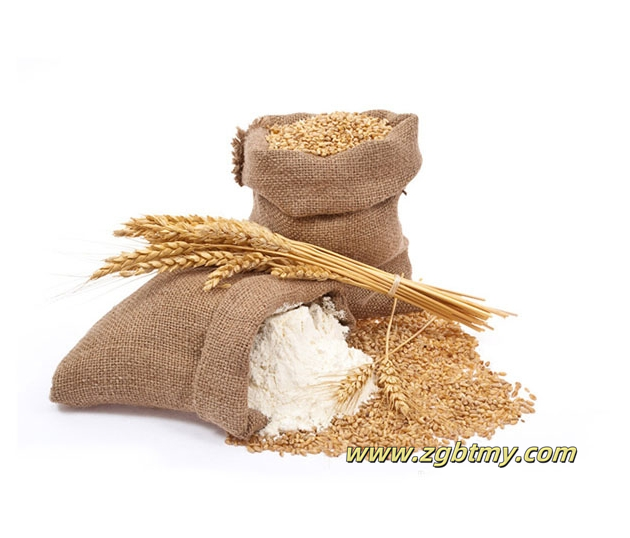Grain machinery
The assembly of 20T wheat milling production line is completed.
On August 3th, the 20T wheat milling production line ordered by a foreign customer was assembled.

The choice of manufacturer is crucial when selecting suitable milling equipment. Choosing a powerful manufacturer can ensure that the equipment is guaranteed, allowing users to produce with more peace of mind. Welcome interested users to visit China Bao Rabbit Trading Co., LTD for inspection
The main components of wheat are carbohydrate, fat, protein, crude fiber, calcium, phosphorus, potassium, vitamin B1, vitamin B2 and nicotinic acid, and there is also an allantoin component. In addition, wheat germ is rich in dietary fiber and vitamin E, and a small amount of arginine, amylase, sitosterol, lecithin and proteolytic enzymes.

Wheat flour is one of the most important food ingredients in the world, widely used in the production of pasta, bread, pastries and other foods. This equipment adopts a new type of screening machine for powder extraction, making it more convenient to replace the screen mesh; The compact structure of the equipment effectively solves the problem of limited space in the customer's factory building; Stable and reliable operation, the entire production line adopts fully automated design, reducing labor costs and requiring only one person to operate.
The specific steps of the wheat flour production line mainly include the following aspects: raw materials - cleaning impurities - moisture adjustment (wheat watering or washing) - moistening wheat - grinding and screening - grading - packaging and storage
1. Raw materials: Wheat is composed of three parts: wheat embryo, endosperm, and wheat husk. The percentage of each part by weight is: endosperm 82-85%, embryo 2-3%, wheat bran 12-14%. Endosperm contains a large amount of starch and some gluten composed of protein, which is the main raw material used to make various foods such as bread and pastries. Wheat bran contains abundant dietary fiber, which is an essential nutrient element for the human body.
2. Cleaning up impurities: mainly cleaning up impurities such as straw, dust, stones, damaged wheat, fuzz, and wild grass seeds in wheat that affect the flour yield. Usually, a combination of air screening is used to remove them, and the process includes multiple steps such as screening, threshing, stone removal, wheat washing, and magnetic separation.
3. Moisture regulation: Due to the varying moisture content and physical characteristics of different varieties and regions of wheat, some are dry and hard, while others are wet and soft. After cleaning, moisture adjustment must be carried out to achieve the optimal moisture content. The purpose of water regulation is to make wheat absorb a certain amount of water, and the protein and starch in the endosperm are displaced due to different water absorption rates, making the endosperm loose and easy to crush Make the epidermis absorb water and become tough, making it less prone to breakage when worn. To avoid affecting the quality of the powder Stabilize the manufacturing process.
4. Moisturizing wheat: (Storing wheat that has been soaked or washed for a period of time is called moistening wheat) Storing wheat that has been soaked for a period of time is mainly to allow water to penetrate into the wheat grains, while also making the water between the grains uniform, making it easy to separate the wheat grain skin from the endosperm, and making it easy to grind. The increased toughness of the wheat skin prevents it from breaking and affecting the flour quality, thus providing conditions for the good and stable processing of the entire process and the compliance of the finished product's moisture standards. Due to different weather and geographical conditions, the wheat variety varies, and its soaking time is generally 8-24 hours. The optimal moisture content for ground wheat is 14-16%. The soaking time and moisture content of hard wheat are generally higher than those of soft wheat.
5. Grinding and powder production: light grinding and fine grinding, skin core separation grinding. Powder production uses 4 skin mills and 2 core mills, and is equipped with auxiliary equipment such as a bran brushing machine. It needs to be ground step by step, sieved step by step, and cycled back and forth.
6. Grading: It can be divided into 65% special flour, 75% special flour, 80% standard flour, 5-15% secondary flour, and 20% bran; Equipment with a scale of 100-150 tons can produce grade powder, specialized powder, and precision standard co production.
7. Packaging and storage: Automatic packaging, can pack 5 kilograms, 10 kilograms, 25 kilograms, and 50 kilograms according to your needs. Flour is best packaged in breathable bags for easy storage. In addition, for large-scale production lines, it is also necessary to consider the storage and transportation of raw materials. The degree of automation and equipment performance of the entire production line will also directly affect production efficiency and product quality. The choice of manufacturer is crucial when selecting suitable milling equipment. Choosing a powerful manufacturer can ensure that the equipment is guaranteed, allowing users to produce with more peace of mind. Welcome interested users to visit, inspect and purchase Yubei Grain and Oil Machinery.
When choosing suitable milling equipment, the choice of manufacturers is very important. Choosing a powerful manufacturer can ensure that the equipment is guaranteed and make users feel more at ease in production. Interested users are welcome to visit and purchase China Bao Rabbit trading Co., LTD
RELATED NEWS
CATEGORIES
LATEST NEWS
CONTACT US
Name: customer service
phone:+8618603722872
Email:[email protected]
Add:Wenfeng District, Anyang City, Henan Province, China

